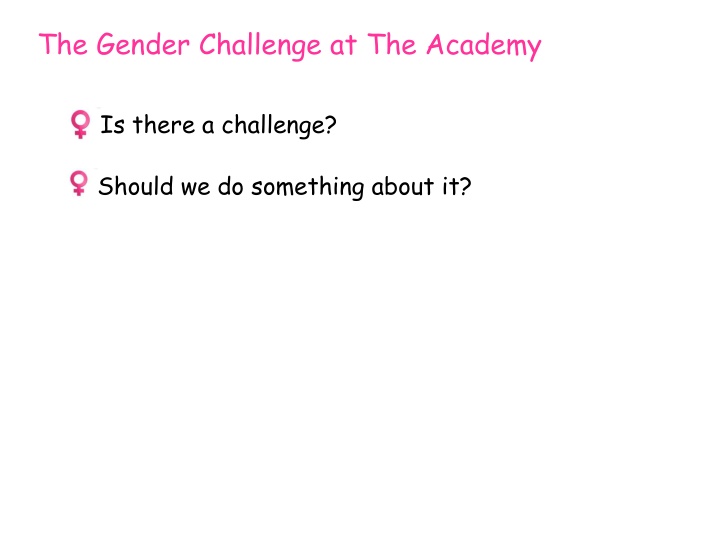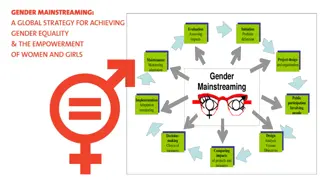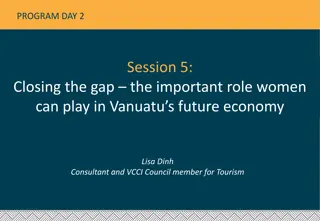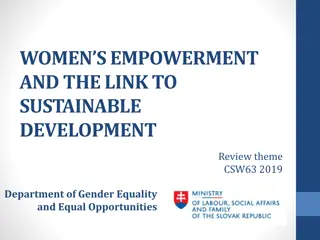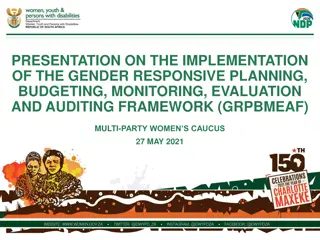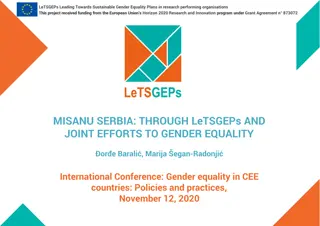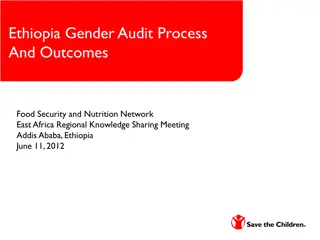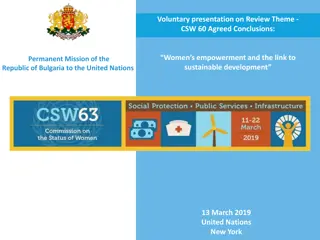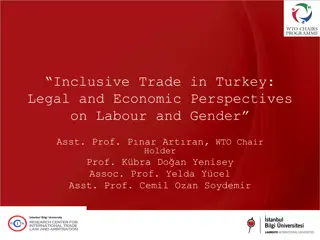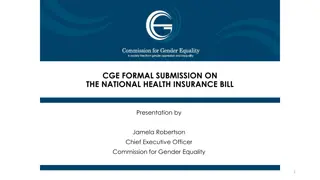Gender Equality in Academia: Challenges and Solutions
The journey towards gender equality in academia is portrayed through images and insights spanning from 1995 to 2009. The challenges faced by women in academic careers, ranging from cognitive differences to traditional family roles and societal expectations, are highlighted. Advocacy for gender equality is emphasized, showcasing the impact of pro-women acts in educational achievements. The need for a diverse and inclusive academic environment is recognized, aiming to address the existing disparities and barriers faced by women in various fields.
Download Presentation

Please find below an Image/Link to download the presentation.
The content on the website is provided AS IS for your information and personal use only. It may not be sold, licensed, or shared on other websites without obtaining consent from the author.If you encounter any issues during the download, it is possible that the publisher has removed the file from their server.
You are allowed to download the files provided on this website for personal or commercial use, subject to the condition that they are used lawfully. All files are the property of their respective owners.
The content on the website is provided AS IS for your information and personal use only. It may not be sold, licensed, or shared on other websites without obtaining consent from the author.
E N D
Presentation Transcript
The Gender Challenge at The Academy Is there a challenge? Should we do something about it?
The scissors diagram, Israel, 1995 90 80 70 60 50 w 1995 40 m 1995 30 20 10 14 years (lecturer / senior lecturer to assoc. prof: 16/11.5 years)
From 1995 to 2009 90 80 70 60 w 2009 50 m 2009 40 w 1995 m 1995 30 20 10 14 years (lecturer / senior lecturer to assoc. prof: 16/11.5 years)
The scissors diagram, Israel, 2009 90 80 70 60 50 w 2009 40 m 2009 30 20 10
We want gender equality: 1. 2. 3. Pure economical justification, exploiting the human asset. Equality, especially in the academia. Heterogeneity, and especially women, lead to a better working environment. 90 80 70 60 50 women 40 30 men 20 10
Cognitive differences??? US department of education, US department of education, 2007 2007 National math exams National math exams :
Pro-women acts did make a difference: undergraduate master phd Proportion of women graduating in Israel
Why so few? 1. Postdoc as a significant barrier. 2. Traditional roles in the family, overlap between the first years of an academic career and of motherhood, different priorities in life , expectations of the society. 3. Viewing the academia as a cold and competitive place. 4. (Some fields, mainly natural sciences): masculine image. 5. Stereotypical thinking, preference of the like in situations of uncertainty, lack of women in the corridor culture .
Why so few? 1. Postdoc as a significant barrier. 2. Traditional roles in the family, overlap between the first years of an academic career and of motherhood, different priorities in life , expectations of the society. 3. Viewing the academia as a cold and competitive place. 4. (Some fields, mainly natural sciences): masculine image. 5. Stereotypical thinking, preference of the like in situations of uncertainty, lack of women in the corridor culture .
Why so few? Gender bias! Exists, indeed, also in our own backyard. 5. Stereotypical thinking, preference of the like in situations of uncertainty, lack of women in the corridor culture .
John and Joan 1968/1986 1: good 5: bad
Competence score (grade the applicant) vs. scientific productivity (publications, citations)
ISF success rate in grant proposals: men success rate women success rate (5-10% out of ~35%, thus 15-30%)
More: -Analysis of recommendation letters (312 letters to leading medicine schools in US): significant disparity in superlatives, confidence in the recommendation, length, technical details, -Adding a curtain in orchestra auditions increased the number of women by 30%-60%. - after some periods of drought, she seems to find her place , took her a long time to found a lab , little participation in international meetings Lack of awareness
Gender bias: intentional or subconscious? Subconscious, and the stronger is the claim to control the subconscious, the stronger the bias is.
Harvard Implicit Association test Category Items Male Man, Boy, Father, Male, Grandpa, Husband, Son, Uncle Female Girl, Female, Aunt, Daughter, Wife, Woman, Mother, Grandma Science Biology, Physics, Chemistry, Math, Geology, Astronomy, Engineering Liberal Arts Philosophy, Humanities, Arts, Literature, English, Music, History Male Female Wife
Harvard Implicit Association test Category Items Male Man, Boy, Father, Male, Grandpa, Husband, Son, Uncle Female Girl, Female, Aunt, Daughter, Wife, Woman, Mother, Grandma Science Biology, Physics, Chemistry, Math, Geology, Astronomy, Engineering Liberal Arts Philosophy, Humanities, Arts, Literature, English, Music, History Science Liberal Arts Math
Harvard Implicit Association test Category Items Male Man, Boy, Father, Male, Grandpa, Husband, Son, Uncle Female Girl, Female, Aunt, Daughter, Wife, Woman, Mother, Grandma Science Biology, Physics, Chemistry, Math, Geology, Astronomy, Engineering Liberal Arts Philosophy, Humanities, Arts, Literature, English, Music, History Science or Male Liberal arts or Female Boy
Harvard Implicit Association test Category Items Male Man, Boy, Father, Male, Grandpa, Husband, Son, Uncle Female Girl, Female, Aunt, Daughter, Wife, Woman, Mother, Grandma Science Biology, Physics, Chemistry, Math, Geology, Astronomy, Engineering Liberal Arts Philosophy, Humanities, Arts, Literature, English, Music, History Science or Male Liberal arts or Female Physics
Harvard Implicit Association test Category Items Male Man, Boy, Father, Male, Grandpa, Husband, Son, Uncle Female Girl, Female, Aunt, Daughter, Wife, Woman, Mother, Grandma Science Biology, Physics, Chemistry, Math, Geology, Astronomy, Engineering Liberal Arts Philosophy, Humanities, Arts, Literature, English, Music, History Science or Female Liberal arts or Male History
We got the position, now what? Leadership: who leads the discussion?
We got the position, now what? Personality: who is nice? Penalties for success: reaction to women who succeed in men gender-typed tasks (2004)
Why so few? 1. Postdoc. 2. Motherhood. 3. Atmosphere. 4. Masculine fields. 5. Gender bias.
What can we do? 1. Postdoc. 2. Motherhood. 3. Atmosphere. 4. Masculine fields. 5. Gender bias. Note, beware, remember: Barriers that money can solve / involve an academic compromise. We don t want to perpetuate the traditional roles in the family. We want parents to enjoy their kids (and vice versa). Kids grow up, faculty members are here for many years. Be aware. Make other aware.
